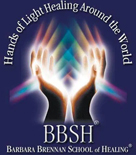We can use our breath to influence functions of our body which we don’t normally have conscious control of such as blood pressure, heart rate, circulation, digestion and many other bodily functions. We can also use it to calm our mind. Our breath affects the sympathetic nervous system which plays a major part in our body / mind state at any moment. Breathing exercises can act as a bridge into those functions of the body of which we do not generally have conscious control.
During times of emotional stress or anxiety our sympathetic nervous system is stimulated and affects a number of physical responses. Our heart rate rises, we perspire, our muscles tense and our breathing becomes rapid and shallow. Abdominal (or deeper) breathing can be used to directly influence these stressful changes causing a direct stimulation of the parasympathetic nervous system (the system that calms us down) resulting in relaxation and a reversal of the changes seen with the stimulation of the sympathetic nervous system.
- Abdominal Breathing
Abdominal breathing can be done while sitting, standing or lying. For best results practise it twice a day or whenever you find your mind dwelling on upsetting thoughts, emotional pain or when you feel anxious or stressed.
Method:
- First just notice your breath as it currently is. Just observe 4 or 5 breaths. Notice where you feel tension or tightness.
- Start by exhaling through the mouth, take a slow deep breath in through your nose imagining that you are sucking in all the air in the room and hold it for a count of 7 (or as long as you are able, not exceeding 7)
- Slowly exhale through your mouth until all the air is released with relaxation; gently contract your abdominal muscles to completely evacuate the remaining air from the lungs. It is important to remember that we deepen respirations not by inhaling more air but through completely exhaling it.
- Repeat the cycle at least four more times for a total of 5 deep breaths. You can continue beyond this number if you wish.
- Breathing to Release Body Tension
We often don’t fully notice the tension we are holding in our bodies until we stop and consciously turn our attention inwards. We tend to have a pattern of holding – areas we automatically tense up as we move through our day. It is good to train the mind and body that this tension is not necessary and using the breath is a good way to do this.
This exercise is best done sitting but can be done while standing or lying. It is recommended that you intermittently check in with your body throughout the day (perhaps 3 – 4 times) and spend just a couple of minutes breathing to release tension.
Method
- Bring your awareness to your body as it currently is. What do you notice? Notice any area that feels tense or heavy or has some other uncomfortable sensation.
- Now bring your attention to your breath. Just notice your breath as it currently is for 4 – 5 breaths then begin to deepen your breathing a little – breathing in through the nose and out through the mouth. You can make a sighing sound with the exhale if your location has sufficient privacy to allow this.
- Now bring your awareness back to one area which stood out as being tense or uncomfortable in your earlier check. With the next in-breath imagine breathing slowly in to that area, holding the breath for a few seconds (7 seconds max) and then allowing the area to relax and let go as you slowly breath out. Repeat this 5 or 6 times.
- If another area of the body feels tense you can move your attention to this area and repeat the exercise above.
- 4-7-8 Breath (or Relaxing Breath)
This breath can be done seated, standing or lying down. It is good for inducing relaxation and sleep. It is recommended that you do four reiterations of the breath each time you practise and that for best results you practise it at least twice a day, every day. You cannot do it too frequently but it is recommended that you do not do more than four breaths at one time for the first month of practice. After that you could practise for longer periods if you wish.
Some describe it as a natural tranquiliser for the nervous system but unlike tranquilizing drugs, which are often effective when you first take them but then lose their power over time; this exercise is subtle when you first try it, but gains in power with repetition and practice. It is recommended that you practise it daily and by doing so it trains
Use it whenever you are aware of internal tension. Use it to help you fall asleep. Use it to deal with food or substance cravings. It is great for mild to moderate anxiety. Everyone can benefit from it.
Method:
- To start exhale completely through your mouth, making a whoosh sound
- Close your mouth and inhale quietly through your nose to a mental count of four
- Hold your breath for a count of seven
- Exhale completely through your mouth, making a whoosh sound to a count of eight
- This is one breath. Now inhale again and repeat the cycle three more times for a total of four breaths
Video Instruction:
If you would like to see this breath being taught on video check out this link:
https://www.drweil.com/videos-features/videos/the-4-7-8-breath-health-benefits-demonstration/
- Alternate Nostril Breathing
This breath is a simple yet powerful technique that settles the mind, body, and emotions. You can use it to ease racing thoughts and to reduce feelings of anxiety or stress. It is also helpful if having trouble falling asleep or to quiet your mind before beginning a meditation practice. It also improves our ability to focus the mind, is said to restore the balance in the left and right hemispheres of the brain and can clear a foggy or muzzy head.
It is best done in a sitting position unless being used to aid sleep (in which case it can be done lying down)
Method:
- Sit comfortably with your spine straight and your shoulders relaxed and gently back (not in an uncomfortable or strained way but allowing the heart area to open).
- Relax your left palm comfortably into your lap and bring your right hand just in front of your face.
- With your right hand, bring your index finger and middle finger to rest between your eyebrows, lightly using them as an anchor. The fingers we’ll be actively using are the thumb and ring finger.
- Close your eyes and take a deep breath in and out through your nose.
- Close your right nostril with your right thumb. Inhale through the left nostril slowly and steadily.
- Close the left nostril with your ring finger so both nostrils are held closed; retain your breath at the top of the inhale for a brief pause.
- Open your right nostril and release the breath slowly through the right side; pause briefly at the bottom of the exhale.
- Inhale through the right side slowly.
- Hold both nostrils closed (with ring finger and thumb).
- Open your left nostril and release breath slowly through the left side. Pause briefly at the bottom.
- Repeat 5-10 cycles, allowing your mind to follow your inhales and exhales.
Video Instruction:
If you would like to see this breath being taught on video check out this link:






